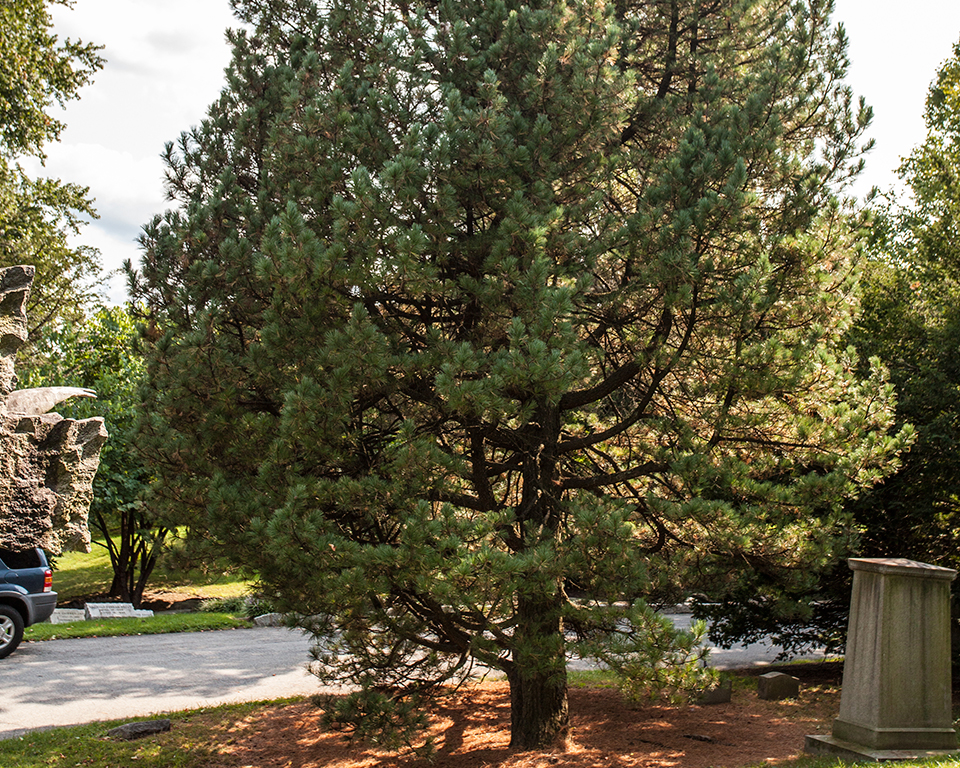PINUS PARVIFLORA – PINE, JAPANESE WHITE

Japanese White Pine should be grown in full sun on well-drained soil with adequate moisture. This makes a nice, small to medium sized picturesque pine tree especially well suited for small spaces and residential landscapes. Needles in fascicles of 5. If trees must be pruned in the western US, do it October through January to help avoid infestation from pitch moths.
Like many pines horizontal branches break easily in ice and wind storms. Something always seems to be falling from this pine tree; needles, sap, branches, and fruit appear on nearby cars, roofs and sidewalks year round. Unless grown in the open with no other trees nearby, shaded lower branches die as the tree grows taller. Open-grown trees keep more lower branches, probably due to greater sun exposure. It is important to maintain only one leader to the top of the plant. Pines are among those susceptible to summer branch drop according to surveys in California. Summer branch drop is a phenomena resulting in failure and breakage of large diameter, live branches typically on calm summer days.
Dropping needles often discourage people from planting pines near streets, parking lots, or near other pavement. Roots also enjoy growing just under the surface of the asphalt and cracking it. Probably the most serious problem of Pines in areas with high pH irrigation water is pine chlorosis. The root system is often dominated by a few large diameter roots.
Like most pines, trees best recover from transplanting when moved balled and burlapped, not bare-root. They also grow fine when planted from containers provided plants are not root bound.

